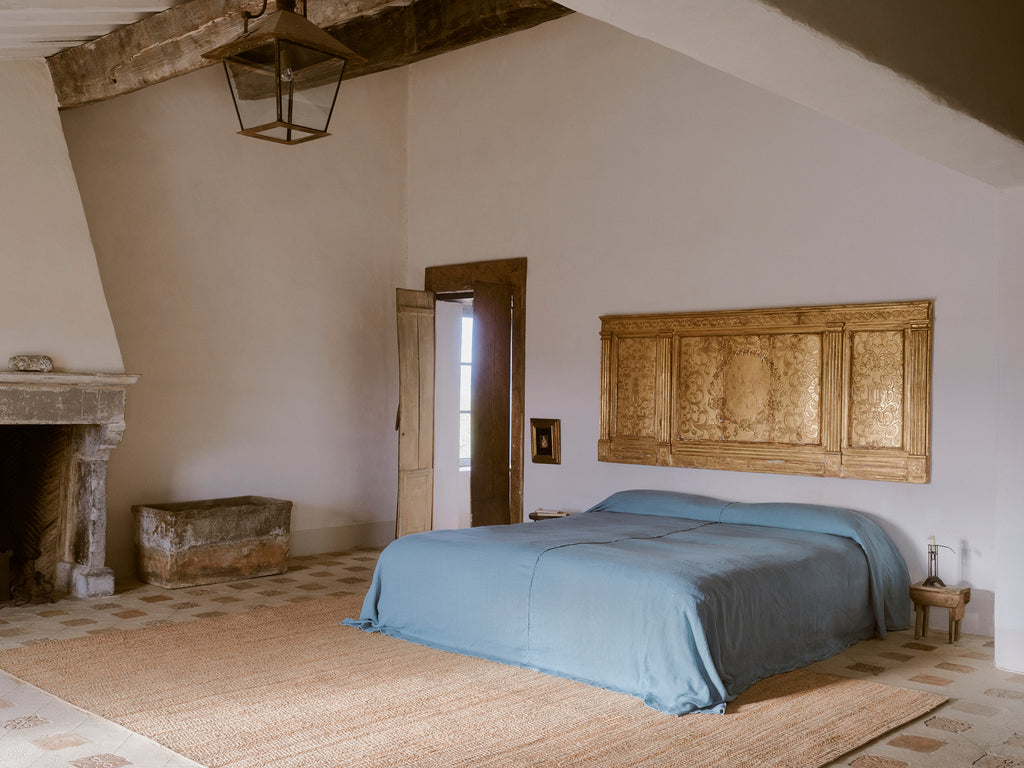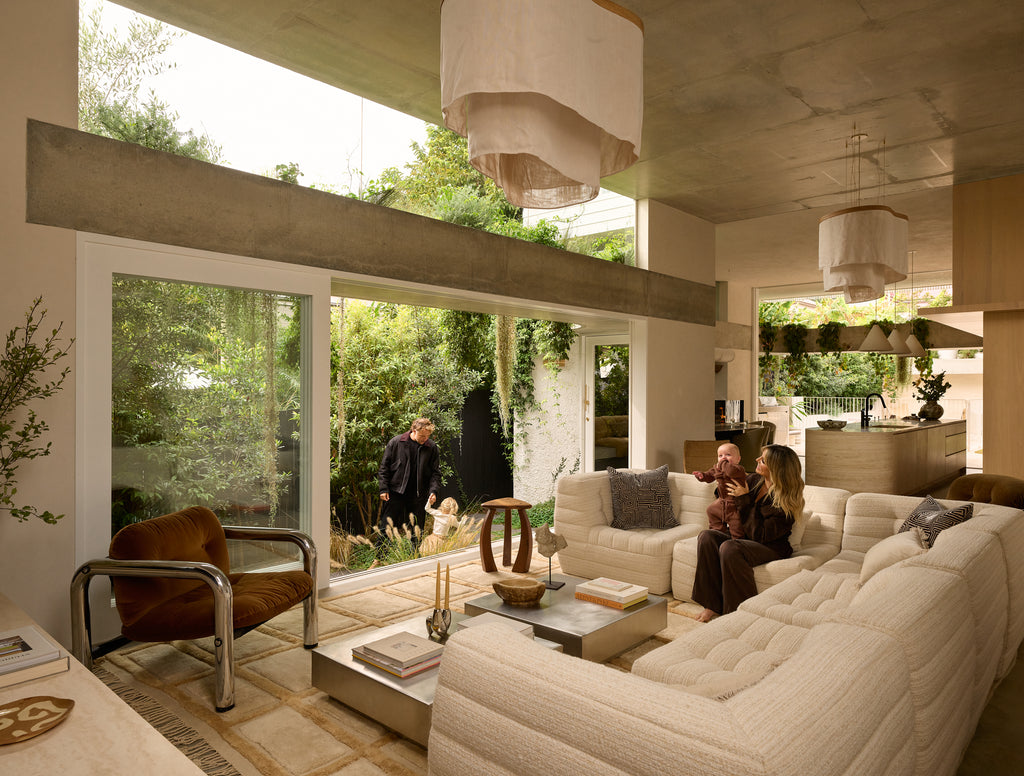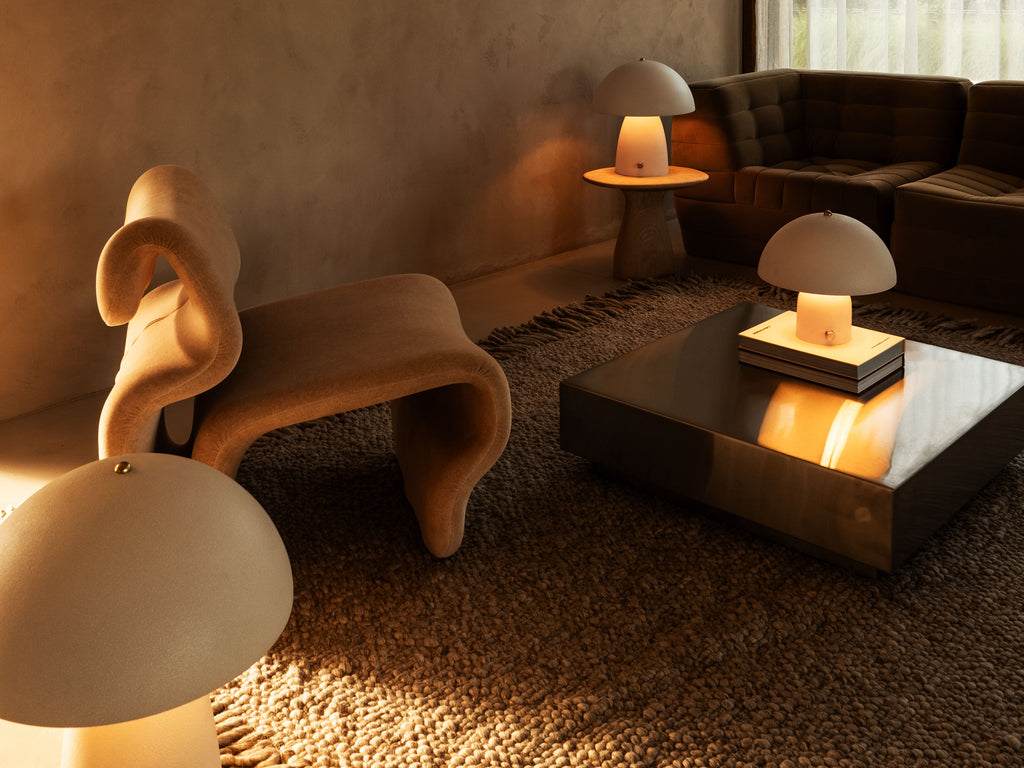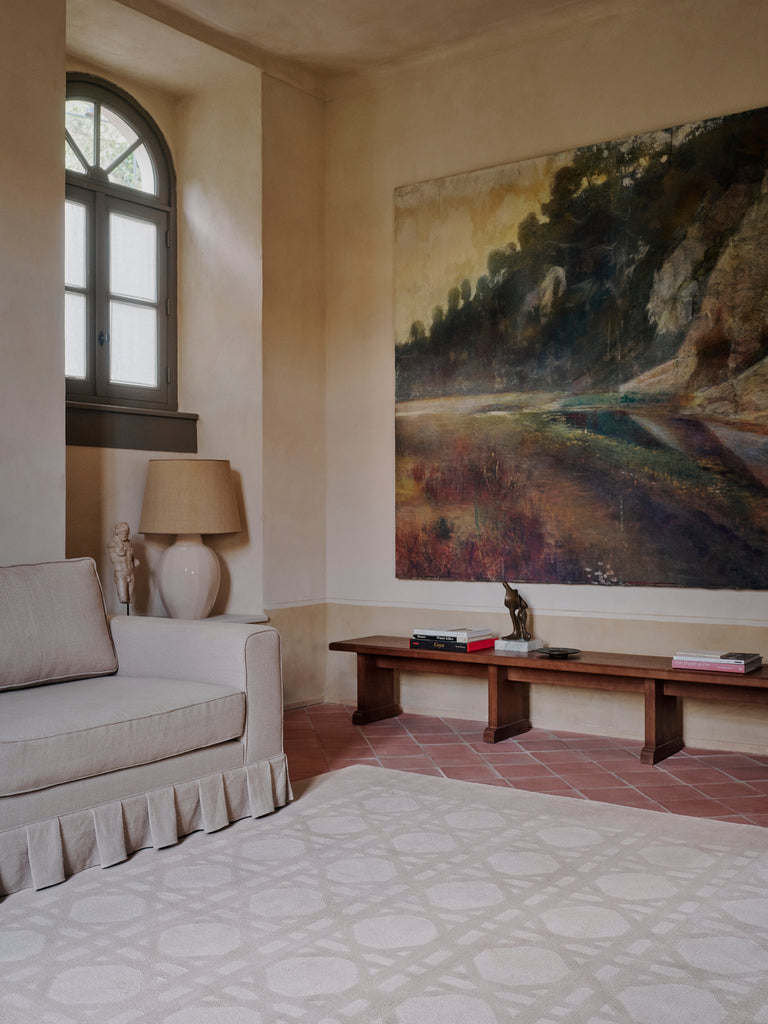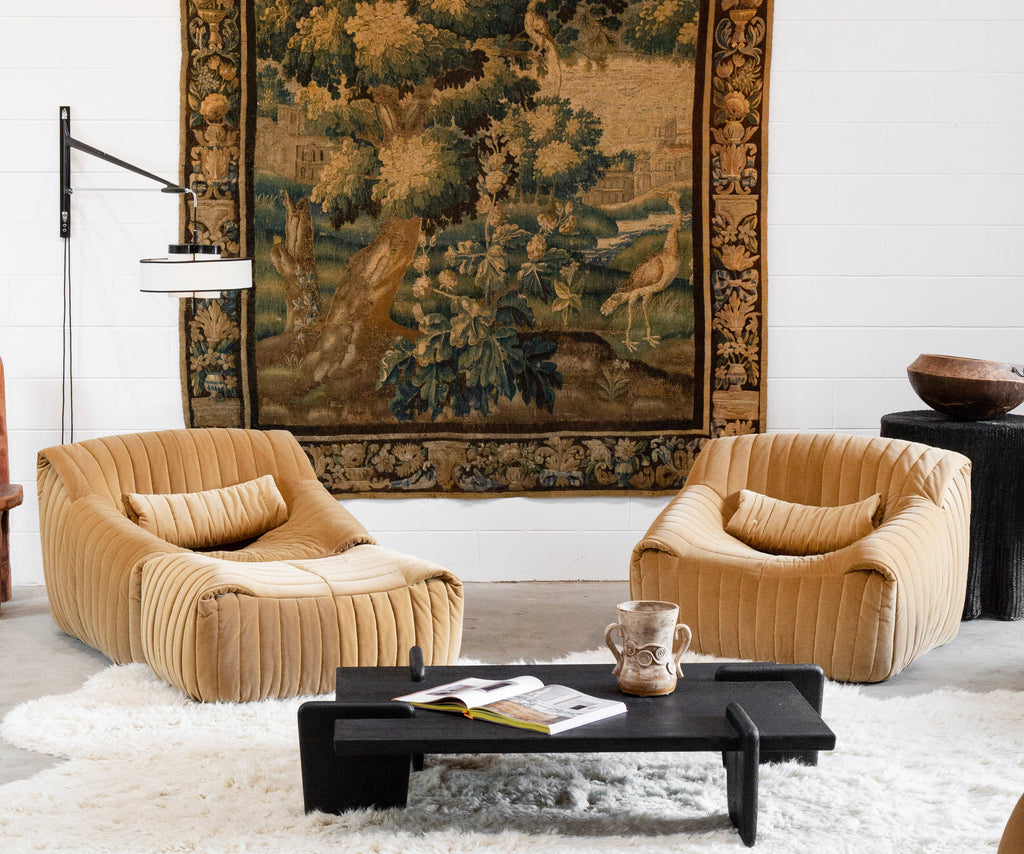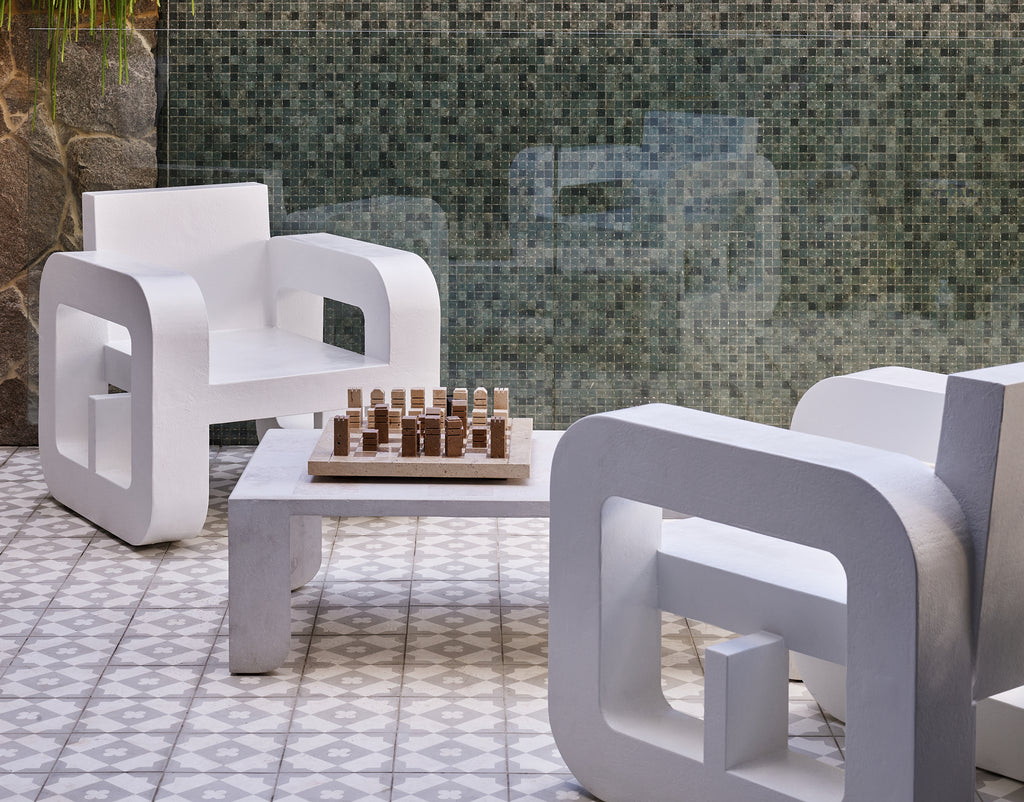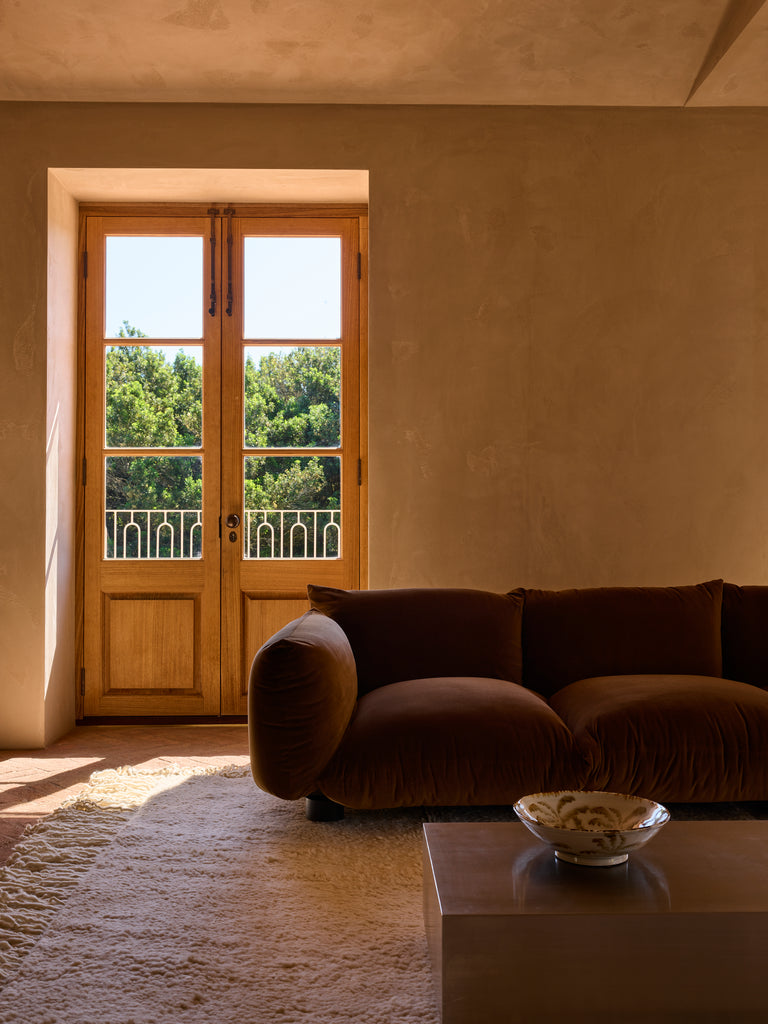
COMMON THREAD
IWD: Pioneering women of design
This International Women’s Day we reflect upon the pioneering women in design, that with fearless tenacity helped to carve the way forward for future generations of female creators and designers. Overshadowed and even erased by their (male) mentors, creative and life partners and peers they had succeeded - the important role of women in design has always been under represented in museums and literature. When we uncover their history, we help to redefine the invaluable mark they left not only on the design world but the world as we know it, finally giving credit where it was (over) due.
GAE AULENTI
One of the loudest voices of postmodernism, Gaetana Aulenti (Gae, as she was known, is pronounced “guy”) was provocative, versatile and controversial. Most famously known for redesigning the Gare d’Orsay train station in to Musee d’Orsay, causing her a level of notoriety in the design scene. Making an unprecedented mark on European museum design, Aulenti’s oeuvre covered industrial and exhibition design, graphic and stage design, lighting and interior design. Rejecting social norms, Gae Aulenti had the audacity to design against the trend and her sense of style was much the same, “The moment it’s loudly announced that red is fashion, I stop wearing red. I want to dress in green.”
Defying the wishes of her parents, she studied architecture at Politecnico di Milaso – graduating in 1954 – one of only two women in the class. From 1955-1965 she was a contributor and Art Director for an avant-garde architectural magazine ‘Casabella’. During this time her unique design philosophy emerged, and she became an active proponent of the Neo Liberty movement that championed the revival of traditional motifs and individual expression (postmodernism) which had become ‘unfavourable’ during the years dominated by modernism.
Some of her most important designs were the Sgarsul Rocking Chair (1962), the April Folding Chair (1964) a take on the classic Directors Chair, the Giova lamp (1964), The Pipistrello Lamp (1965) Tavolo Con Ruote Table (1980) and the Sanmarco table (1984) – she felt that furniture should never dominate a room, keeping her chairs and sofas low-slung.
Feminism as a subject did not interest her, instead she chose to focus upon not seeing herself as a minority in the design world, adding “Women in architecture must not think of themselves as a minority, because the minute you do, you become paralysed. It is most important to never create the problem." An issue that is sadly still of relevance today.
“Women in architecture must not think of themselves as a minority, because the minute you do, you become paralysed. It is most important to never create the problem."


__________
LELLA VIGNELLI
Born in 1934 Lella Vignelli (nee Valle) studied architecture at the University of Venice and MIT. While her talents were standalone, she is consistently remembered as one part of a design duo that she shared with her life and creative partner, Massimo Vignelli. Together with Massimo, she founded Unimark International, a modernist design studio that created the New York subway graphic/signage that is still in use today. Later they went on to establish a design and architecture office at home in Milan, focusing on office accessories, homewares, graphics and furniture – creating one of their most statement designs for the home, the Metafora Coffee Table.
While broadly her contribution was overlooked, this was never questioned by those that worked with her. One of their former junior designers reminisces that he was excited to start working with ‘legend’ Massimo Vignelli, but a former studio intern told him, "Oh, wait till you meet Lella". He went on to say that Massimo taught him how to be a good designer, but Lella how to be a successful designer.
"I learned from Lella that talent and passion were crucial, but that alone they were not enough," he wrote. "If a designer really wanted to make a difference in the world, you needed to also have brains, cunning, confidence and relentless drive."
"These traits turned abstractions into reality, converted doubtful clients into passionate advocates and transformed trivial notions into ideas of consequence."
I learned from Lella that talent and passion were crucial, but that alone they were not enough," he wrote. "If a designer really wanted to make a difference in the world, you needed to also have brains, cunning, confidence and relentless drive."


__________
GABRIELLA CRESPI
Gabriella Crepsi was a Milanese designer who attracted a cult following due to the geometric, sculptural forms she created that were imbued with an aura of glamour. Moving in influential and aristocratic circles, she used her apartment as a way to promote her furniture and objets to her friends, some of which were her best clientele.
Dichotomies define her style that is both pure and baroque, force and finesse much alike the woman herself. Among her most famous designs are her Z Table and Z Bar, the Ellisse Table, the Fungo Lamp, the block-shaped Menhir Cabinet, the Yang Yin Desk, and the sculpted Ara Table – working greatly with bronze and metals. Her pieces were sophisticated yet unconventional, imbued with a warm human quality.
Her life was one of self-reinvention, while her career spanned from the 1950’s-1980’s, she abruptly abandoned her craft and retreated entirely out of the limelight, spending the next two decades on sojourn in the Himalayan Mountains.
“I have always considered my independence in my work as well as in my life as one of my biggest achievements.”
Her private apartment was shown as part of Salone del Mobile in 2018, a year after her passing, championed by her daughter Elisabetta. “I wanted to honour and protect my mother’s creativity and achievements,” she said, “I’d like her work to be known and respected.”


__________
FLORENCE KNOLL
Florence Knoll was a pioneering designer and entrepreneur who was responsible for the modern look and feel of America’s post-war office with sleek furniture, artistic textiles and an uncluttered, free-flowing workplace environment. Transcending design fads, she helped to transform the field of interior design, from interior decoration to spatial architecture.
In 1946 she founded Knoll Associates with her life and creative partner Hans Knoll, who took the role of the charismatic salesman, and she the arbiter of taste. Her total design favoured open work spaces over private offices, and furniture that was grouped for informal discussions. Integrating lighting, vibrant colours, acoustical fabrics, chairs moulded in to tulip petals, sofas and desks with chrome legs, collegially oval meeting tables and futuristic multilevel interiors. Her exactitude while it frustrated those who worked under her, became her definitive signature.
“The urge for good design is the same as the urge to go on living. The assumption is that somewhere, hidden, is a better way of doing things.”
Inviting friends to join the fold, acquiring rights to their creations by paying them commissions and royalties, and furthermore ensuring they received credit for their designs. Some of the 20th centuries most admired designs became Knoll replicas, Isamu Noguchi’s Cyclone Table, the Barcelona chair by Mies van der Rohe and Lilly Riech, the scissor chair by Pierre Jeanneret and the Cesca and Wassily chairs by Marcel Breuer.
In 1955 Hans died in a car accident and Florence Knoll took over the operations of the company until 1960, when she then retired and became the Director of Design, with young hopefuls flocking to the firm to work under her. Sales rose steadily till 1971, proving to the sceptics that the business would not only continue after Hans’ death, but also prosper.
In 1961 she was the first woman to receive the gold medal for Industrial Design from the American Institute of Architects. The very essence of her work was found in clean and functional forms, that continue to be influential and contemporary and can still be found in modern offices, homes and public spaces.


__________
EILEEN GRAY
An Anglo-Irish architect and furniture designer, Eileen Gray was a pioneer of the modern movement in architecture.
Starting her career when she was hired to re-design the Rue de Lota apartment, she received great praise from this, with critics describing her work as ‘the epitome of Art Deco.’ The critical success of this project prompted her to open her own shop in 1922 where she sold geometric rugs she had designed and furniture in luxurious materials like exotic woods, ivory and furs before she refined them to become more simplified and industrial, reflecting her growing interest in other modernists. After the great war she had also grown uncomfortable with class-bound opulence.
In 1926 she began one of her better-known projects, a house with the enigmatic name of E-1027 (which was an acronym that was romantically tied to her lover at the time Jean Badovici.) Whilst architecture had been unwelcoming for women to join in their male-dominated ranks, this house became a break-thru and an integral part of the emerging modernist movement.
“To create, one must first question everything.”
The house that was routinely described as a masterpiece, was formulated on Le Corbusier’s ‘five points of the new architecture’. Taking three hard years to complete, her ‘maison en bord de mer’ placed her for a brief period at the forefront of architectural modernism, till her male-counterparts overwrote her contribution.


__________
CHARLOTTE PERRIAND
One of the most innovative modernist designers of the 20th century, Charlotte Perriand began her career under the wing of modernist pioneer Le Corbusier. Famously he had dismissed her initial job application, after he remarked on her sketches - ‘we don’t embroider cushions here’. Together with Pierre Jeanneret, they embarked on a professional relationship spanning ten years, where the line between who designed what blurred, Perriand had once described the trio as ‘three fingers on the same hand.'
Spending almost all of the 20th century designing buildings, furniture, rooms and objects - Perriand had the knack for matching strict modernist demand for utility and practicality with her signature good taste. Much of her work remains influential reference points today.
Her work benefit from a great sense of humanity and her childhood spent immersed in nature in the French countryside. An ardent researcher, she explored her surroundings often creating not only the furniture within a space, but the space itself.
“Everything is linked, the body and the mind; mankind and the world; the earth and the sky.”
Her most significant architectural work was Les Arcs, a French ski resort she had envisaged – with Perriand leading a collective of architects. Melting in to its landscape, it encapsulated her lifelong belief that design and the products that which we surround ourselves and the environments we inhabit directly affect our state of mind.


It is important to consider Perriand’s vision for a beautiful world, especially upon investing in a Perriand design, as you embrace the most essential aspect of her work – her belief that design exists in service to a greater good. As she once said, ''In every important decision there is one option that represents life, and that is what you must choose.''
Despite all of this her large contribution was long overshadowed by the renown of her male peers. Le Corbusier in particular is often credited as the sole creator of pieces that were collaborative – for instance it had been Perriand who had designed the compact modular kitchens for his groundbreaking ‘Unite d’Habitation’ housing development in Marseille where she designed open planned interiors to ensure that women didn’t feel trapped in the kitchen. She had also been responsible for materialising the Grand Confort chair, the Basculante chair, the Chaise Lounge – though they had all been solely attributed to Le Corbusier, despite her name being first listed on the patents.
__________
If you liked this you might like
Charlotte Perriand's 'chalet by the singing water'


